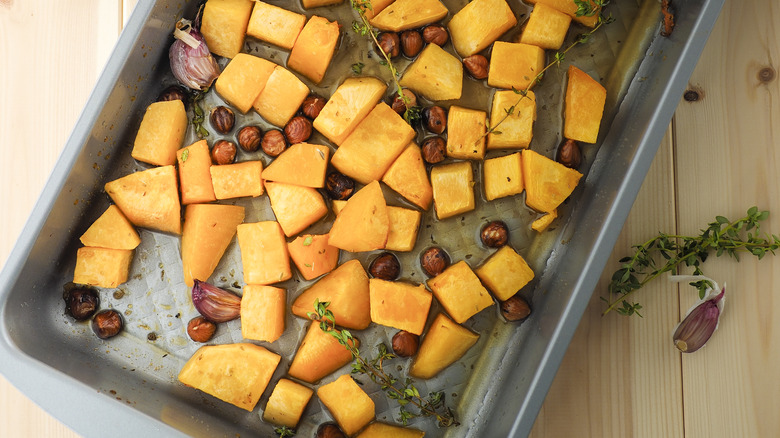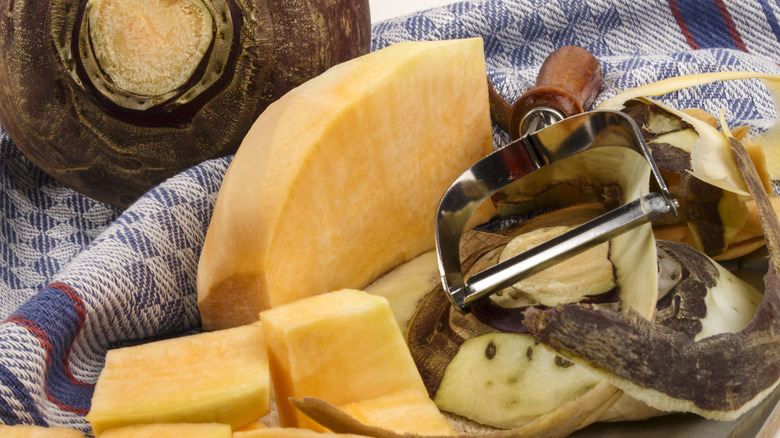The Peeling Method To Follow Before Roasting Rutabaga
With a taste like cabbage and a shape like a turnip, the rutabaga is a lesser-known root vegetable with a lot of promise. With a mild flavor, gorgeous yellow hue, and a mouthwatering, creamy texture when roasted, this ingredient can be incorporated into many recipes — from rutabaga and eggplant tacos to turnip and rutabaga gratin. If you plan on adding it to your cooking rotation, however, we have one big tip for you. Be sure to microwave your rutabaga before you peel it.
Microwaving a vegetable before prepping it in any other way may seem like the wrong order of operations, but in this case, it is very necessary for safety and ease of prep. Rutabagas are round and have hard, dense flesh when raw, along with a tough skin that is often covered in wax for transport. These factors make them difficult to peel as well as unwieldy, which means handling them can be somewhat risky since wobbly vegetables often cause knives and peelers to slip. Sticking the vegetable in the microwave for a short while can help mitigate these issues by softening the skin and causing it to separate from the interior flesh, making it much easier to handle.
How to peel a rutabaga
After washing your rutabaga with warm water, stick it in the microwave for a few minutes to achieve the intended effect. Then place the vegetable on a cutting board and slice it in half, laying both halves flat-side down. This will keep the root from moving around as you work with it. Finally, using a Y-shaped peeler, remove the skin from the flesh in long strips. Once this has been done on both halves, your rutabaga will be ready to cook.
If you don't have a Y-shaped vegetable peeler in your kitchen, a second peeling approach will also work well. Begin again by washing the rutabaga, microwaving it, and cutting it into two sections. Then cut each root section into slices of whatever thickness you prefer. You should be left with half-moon-shaped pieces of rutabaga, each with a strip of skin on the outside. Using a paring knife, you can run the blade under the skin on each piece, following the curve of the outside section to remove the peel. If you've washed your rutabaga thoroughly enough, the leftover skin can be saved and eaten separately. Fry or roast the peelings with a hearty amount of oil to crisp them up, then add salt and seasonings. They can be enjoyed as a snack or used as a garnish.

